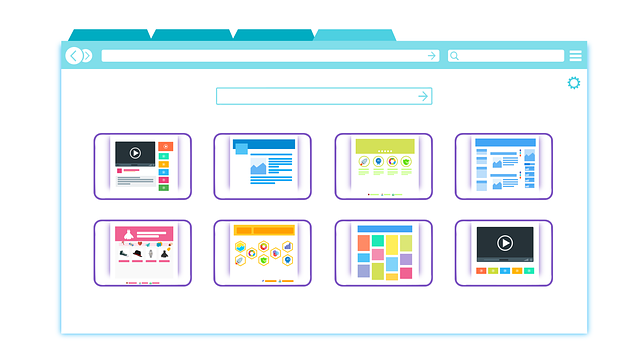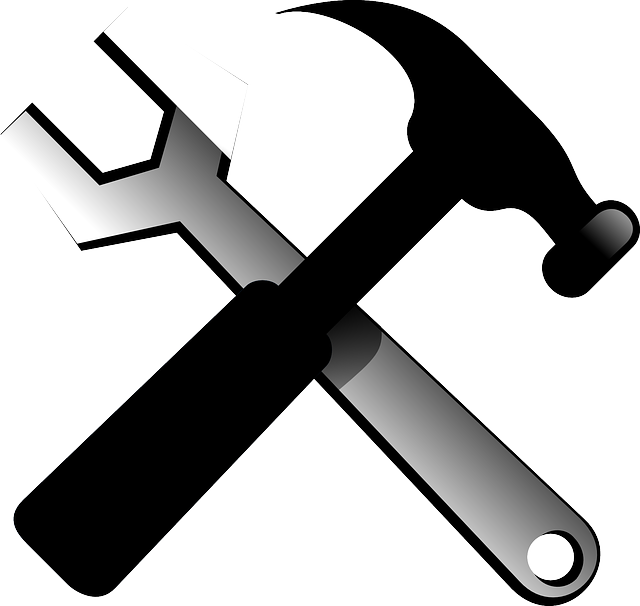Redesigning a website is vital for businesses to stay competitive in the digital landscape. Before redesigning, professionals should define goals, assess current site performance, and understand target audiences. Budget planning involves prioritizing changes, allocating resources, and consulting experts. Cost-effective solutions like templates and DIY builders can significantly reduce expenses while maintaining quality. Regular content updates, SEO optimization, and UX best practices ensure long-term success and improved engagement. Outsourcing or in-house execution offers different control levels, with both aiming to optimize website maintenance. Measuring KPIs through tools like Google Analytics helps assess ROI and demonstrates the value of a successful redesign.
Looking to refresh your website without breaking the bank? An affordable website redesign can be a game-changer for businesses aiming to enhance their online presence. This comprehensive guide navigates essential steps from identifying core needs and setting realistic budgets to optimizing content and leveraging UX best practices. Discover cost-effective design solutions, explore ready-made templates, and learn when outsourcing or in-house redesigns make sense. By the end, you’ll equip yourself with strategies to measure success and maximize your return on investment in website maintenance.
Understanding Website Redesign Needs

Redesigning a website is an essential aspect of website maintenance, offering businesses a chance to refresh their online presence and cater to evolving customer needs. Before diving into the redesign process, it’s crucial to identify specific goals and requirements. This involves assessing the current site’s performance, user experience, and visual appeal. Website maintenance professionals should consider factors like target audience changes, new marketing strategies, and technological advancements that can enhance functionality and accessibility.
Effective website redesign starts with understanding user behavior, preferences, and pain points. By conducting thorough research, analyzing competitor sites, and gathering client feedback, website maintenance teams can make informed decisions. This ensures the redesigned site not only looks modern but also provides a seamless, intuitive user experience, driving better engagement, conversion rates, and overall business success.
Setting a Realistic Budget for Redesign

When planning a website redesign, setting a realistic budget is paramount to ensure the process remains feasible and effective. Start by evaluating your current website’s performance and identifying areas that need improvement. This involves assessing factors like functionality, user experience, and visual appeal during website maintenance checks. Then, determine priority changes that will significantly enhance your online presence without breaking the bank. Allocate resources based on these priorities, considering both direct costs for design and development, as well as indirect expenses such as content creation and ongoing website maintenance.
A strategic approach to budgeting involves setting clear goals and understanding return on investment (ROI). Consult with web design experts to get estimates for different redesign scenarios, keeping in mind that an affordable redesign doesn’t necessarily mean compromising quality. Look for creative solutions, like utilizing cost-effective platforms or leveraging existing assets, to achieve a fresh look and feel without exceeding your budget. Regularly review progress against your set financial parameters to stay on track and make adjustments as needed throughout the website maintenance process.
Prioritizing Website Functions and Features

When considering a website redesign, prioritizing functions and features is crucial for an affordable outcome. Website maintenance involves evaluating core elements that enhance user experience and business goals. Focus on essential pages like Home, About Us, Services, and Contact, ensuring they are optimized for mobile and load quickly. Remove any unnecessary functionalities or content that might increase costs without adding value.
During the redesign process, keep the user interface intuitive and navigation simple. Prioritize clear calls-to-action (CTAs) to guide visitors through the desired journey. Remember, a well-maintained website is not just aesthetically pleasing but also functional, ensuring every element serves a purpose in engaging and converting your target audience, thereby delivering better results for your investment in website maintenance.
Exploring Cost-Effective Design Solutions

In today’s digital landscape, a well-designed website is no longer a luxury but a necessity for businesses aiming to thrive online. However, concerns about high redesign costs often deter companies from refreshing their web presence. Thankfully, exploring cost-effective design solutions can democratize access to modern and appealing websites. Tools like templates, pre-built themes, and DIY website builders offer affordable options without compromising aesthetics or functionality. These resources enable businesses of all sizes to take control of their online image, ensuring a more competitive edge in the market.
Website maintenance plays a pivotal role in keeping your digital footprint fresh and engaging. Regular updates, responsive design for mobile users, and seamless integration of new features are essential. Many cost-saving strategies involve prioritizing core elements first, such as simplifying navigation and enhancing content presentation. By focusing on these key aspects, businesses can create an intuitive user experience without breaking the bank, thereby fostering better engagement and conversions.
Optimizing Content for Affordability

When considering a website redesign on a budget, optimizing content is a powerful strategy. It involves carefully curating and restructuring information to ensure every element serves a purpose and contributes to the overall user experience. By streamlining content, you can reduce page load times, making your site more affordable to maintain in the long run. Efficient content management also allows for better search engine optimization (SEO), as well-organized content is easier for search engines to crawl and index, ultimately improving your website’s visibility and reach.
This process may include removing redundant or outdated material, consolidating similar topics into comprehensive guides, and utilizing clear, concise language. Additionally, incorporating multimedia elements like infographics or videos can enhance engagement without significantly increasing costs. Effective content optimization is a key step in achieving an affordable website redesign that offers a seamless user journey while maintaining the site’s financial viability.
Leveraging User Experience (UX) Best Practices

When considering a website redesign, one of the most effective strategies is to leverage User Experience (UX) best practices. This involves understanding and prioritizing user needs, ensuring intuitive navigation, and creating visually appealing designs that are consistent across all devices. By implementing these principles, businesses can significantly enhance their website’s usability and accessibility, leading to improved engagement and conversion rates.
Effective UX design also includes regular website maintenance and updates. Regularly reviewing and updating content, fixing broken links, optimizing for search engines (SEO), and addressing user feedback are essential components of maintaining a high-performing website. These ongoing efforts ensure that the site remains relevant, secure, and aligned with current design trends and accessibility standards, ultimately contributing to a positive user experience.
Utilizing Ready-Made Templates and Themes

Redesigning a website doesn’t always have to be an expensive endeavor. One cost-effective strategy is to leverage ready-made templates and themes, which offer a wide range of professional designs at affordable prices. These options are particularly beneficial for businesses and individuals with limited budgets or specific needs, allowing them to create visually appealing websites without breaking the bank.
Ready-made templates provide a straightforward approach to website maintenance. They come pre-designed and often include customizable features, enabling users to personalize elements like colors, fonts, and content placement. By utilizing these templates, website owners can quickly launch their online presence while ensuring a cohesive and modern look. This method streamlines the redesign process, saving time and resources without compromising on design quality.
Outsourcing vs. In-House Website Redesign

When considering a website redesign, businesses often grapple with the choice between outsourcing and in-house execution. Outsourcing involves hiring external agencies or freelancers for the task, while in-house redesign means utilizing existing team members who handle website maintenance. Both approaches have their merits when it comes to affordability.
Outsourcing can be a cost-effective solution as it leverages specialized skills from remote experts. This approach reduces overhead costs associated with full-time employees and allows businesses to access a diverse range of talent globally. However, it may result in less control over the redesign process and potential communication barriers. In contrast, in-house website redesigns provide direct oversight, ensuring alignment with brand values and goals. It can be particularly advantageous for smaller businesses with limited budgets but dedicated IT or marketing teams capable of managing the project effectively.
Measuring Success and ROI of Affordable Redesign

Measuring the success of an affordable website redesign is crucial for gauging the return on investment (ROI). Key performance indicators (KPIs) such as increased organic traffic, improved bounce rates, and higher conversion rates serve as reliable metrics to assess the effectiveness of the redesign. Tools like Google Analytics can track these KPIs over time, providing valuable insights into user behaviour and engagement.
Regular website maintenance is integral to sustaining the positive outcomes of a redesign. Ongoing optimization efforts, including content updates, SEO improvements, and bug fixes, ensure that the site remains relevant and functional. By dedicating resources to website maintenance, businesses can maximize their investment, attract more visitors, and ultimately drive conversions, thereby achieving a higher ROI.
